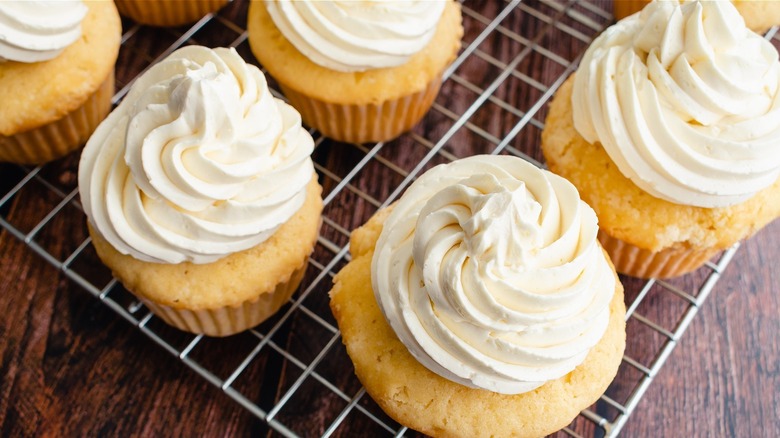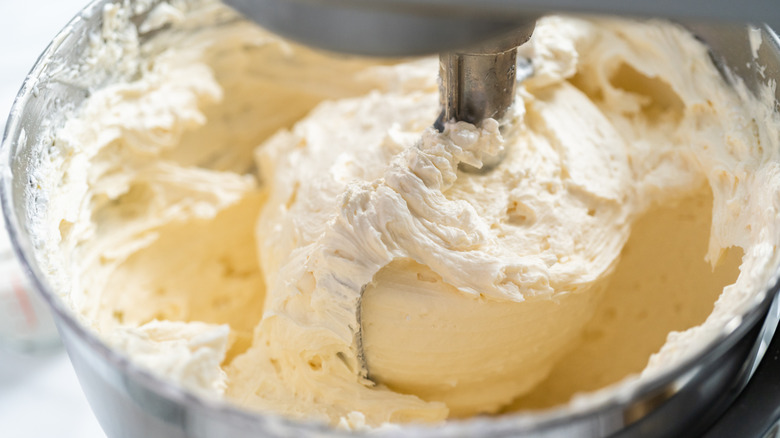The Key To Fixing Any Buttercream Disaster That Baking Throws At You
No matter what kind of cake you bake, let's agree on one thing: frosting makes a cake. The frosting gives cakes flavor, a beautiful finish, a canvas for color and decor, and can be piped to create gorgeous designs. No wonder kids always eat the frosting first! That's why home bakers know that when a batch of buttercream frosting suddenly goes wrong, it's devastating. So, do we chuck it and start over again, or can the frosting be saved?
There are several types of buttercream frosting, such as Swiss meringue, American, Italian meringue, and French meringue. Each requires specific techniques to make and has different textures — but they all have butter in common. Perhaps the most critical factor in getting butter to behave well in baking and frosting is keeping it at the right temperature. Whether your buttercream is split, has a grainy or lumpy texture, or becomes liquidy and runny, the problem can be traced back to how warm or cold the butter in the mixture is.
The good news is that lumpy or runny buttercream frosting can be saved with simple tricks to fix the temperature.
A little bit of heat or cold can fix buttercream frosting
How to fix buttercream frosting depends on what's happening in the mixing bowl. If buttercream frosting looks lumpy, grainy, or curdled, your mixture is too cold. In this instance, the butter clumps together instead of emulsifying with the other ingredients. To fix it, gently add warmth to the frosting by letting it sit out at room temperature, or swaddle the bowl with a warm kitchen cloth. You can even use a hair dryer to blow warm air around the bottom of the bowl to gently warm the ingredients inside without melting the butter. After it warms, beat the frosting on a low speed until it's smooth and cohesive.
However, if your buttercream frosting looks melted and runny, the butter in the mixture is too warm. This can happen on hot days or if you let the butter sit out too long. When making buttercream frosting like Swiss meringue, this can occur when butter is added before the meringue cools. To fix this, cool it down: The easiest way is to put the whole bowl of frosting into the fridge. Let it chill for approximately five minutes, then beat the buttercream on a low speed until it becomes smooth, spreadable frosting.
With either method, it's crucial to go slowly and add only a little heat or a quick burst of cold to fix the buttercream. Otherwise, you risk flipping the frosting from curdled to runny — or vice-versa.

